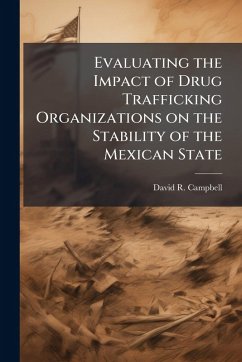
The Key to Stability on the Korean Peninsula
United States, Japan and China
Versandkostenfrei!
Versandfertig in über 4 Wochen
15,99 €
inkl. MwSt.

PAYBACK Punkte
8 °P sammeln!
As another crisis looms on the horizon for the Korean Peninsula, the major powers in Northeast Asia are working to defuse the situation. Since 1950, the United States has been a key player in the defense of the Republic of Korea (ROK). This paper will explore the national security relationships between the United States, China and Japan and how they relate to both the Republic of Korea and the Democratic Peoples Republic of Korea (DPRK). The current security environment including the 1954 Mutual Defense Treaty between the Republic of Korea and the United States; the role of the current militar...
As another crisis looms on the horizon for the Korean Peninsula, the major powers in Northeast Asia are working to defuse the situation. Since 1950, the United States has been a key player in the defense of the Republic of Korea (ROK). This paper will explore the national security relationships between the United States, China and Japan and how they relate to both the Republic of Korea and the Democratic Peoples Republic of Korea (DPRK). The current security environment including the 1954 Mutual Defense Treaty between the Republic of Korea and the United States; the role of the current military structure, the ROK-US Combined Forces Command; and the threat that North Korea presents will be highlighted. Several regional powers also exert influence on the Korean Peninsula. A key ally for the United States is Japan. This security relationship is based on the Japan-US Treaty of Mutual Cooperation and Security. This work has been selected by scholars as being culturally important, and is part of the knowledge base of civilization as we know it. This work was reproduced from the original artifact, and remains as true to the original work as possible. Therefore, you will see the original copyright references, library stamps (as most of these works have been housed in our most important libraries around the world), and other notations in the work. This work is in the public domain in the United States of America, and possibly other nations. Within the United States, you may freely copy and distribute this work, as no entity (individual or corporate) has a copyright on the body of the work. As a reproduction of a historical artifact, this work may contain missing or blurred pages, poor pictures, errant marks, etc. Scholars believe, and we concur, that this work is important enough to be preserved, reproduced, and made generally available to the public. We appreciate your support of the preservation process, and thank you for being an important part of keeping this knowledge alive and relevant.












